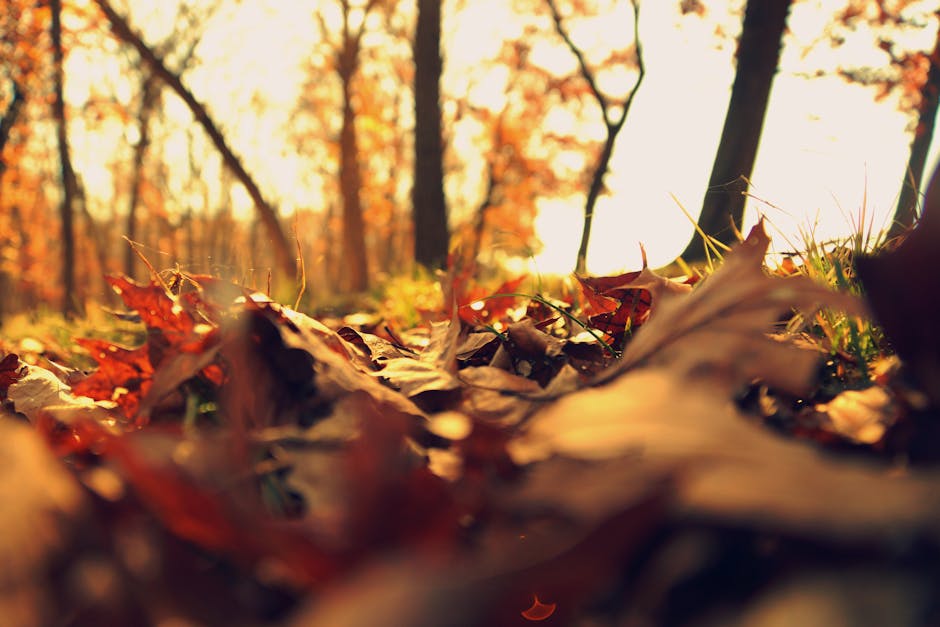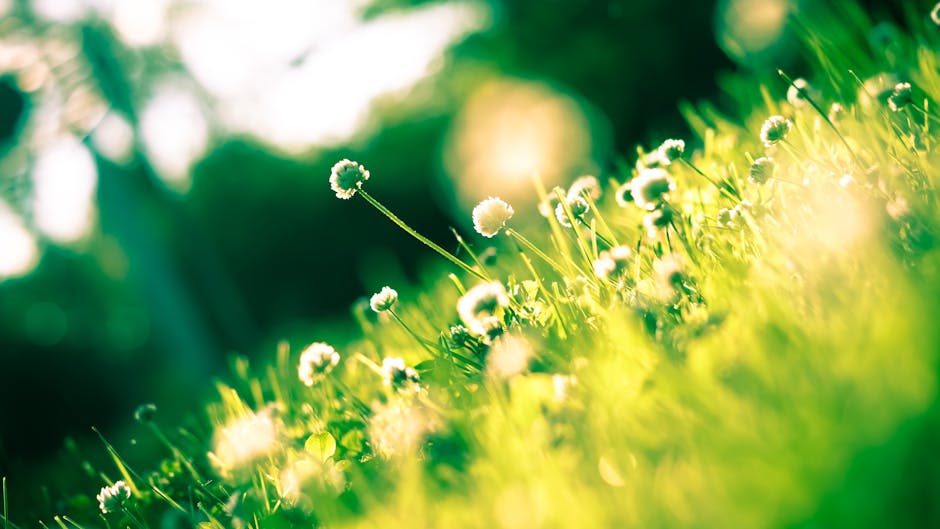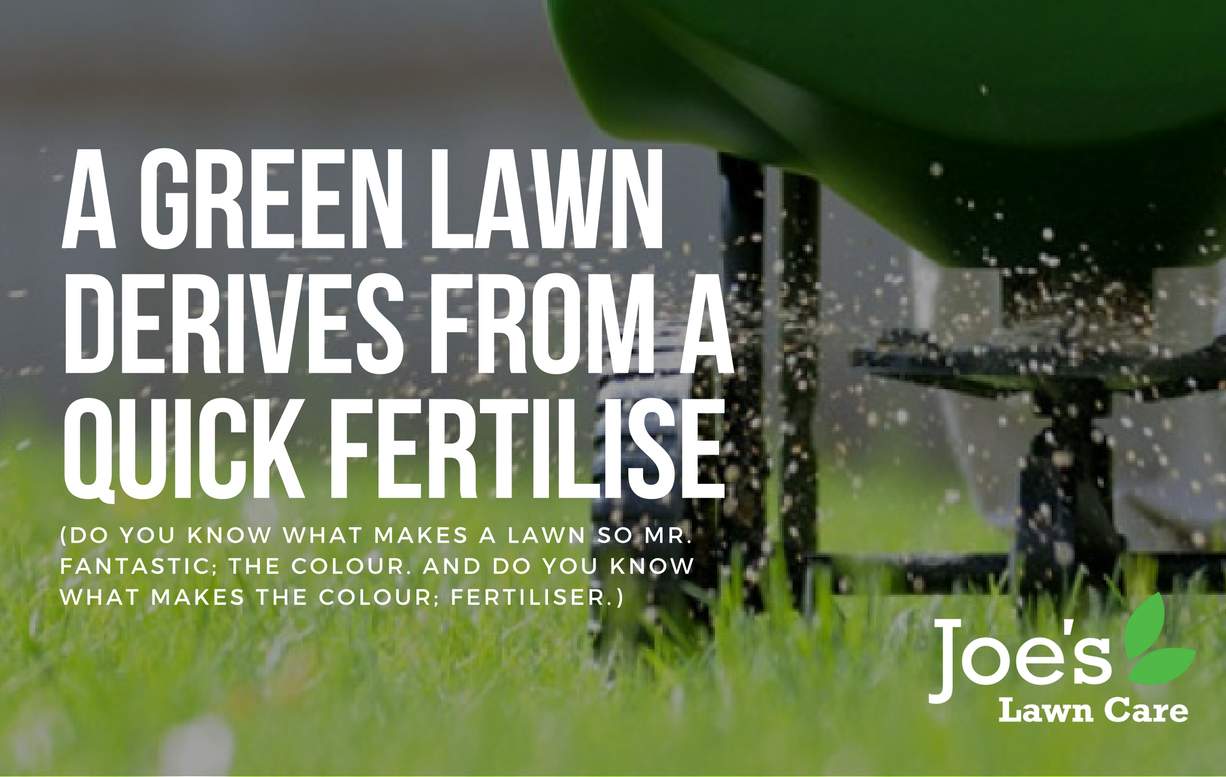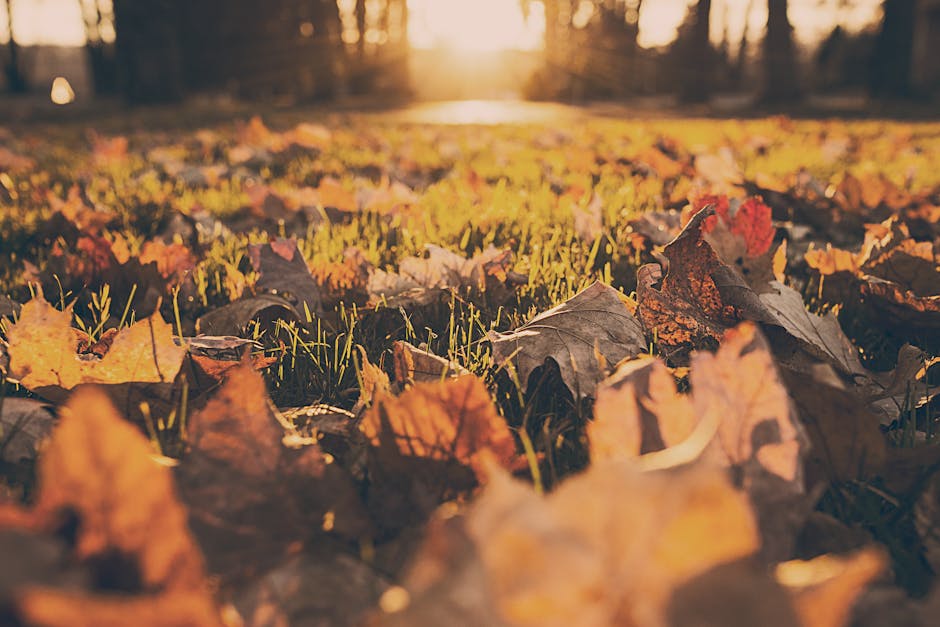A Green Lawn Derives From A Quick Fertilise
Do you know what makes a lawn so Mr. Fantastic; the colour. It’s peering out of your kitchen window with sleepy eyes and being greeted by a shag-pile carpet of lush emerald grass, little droplets of dew reflecting the mid-spring sun as they cling to the tips of every other blade. That’s what gardeners, homeowners and squatters the world over want to wake up and see, and the best way to achieve this spring green-up is to fertilise your lawn in later stages of autumn. Mmmm hmmmm, the race for a gorgeous spring garden starts now.

Autumn Fertiliser? Are You Sure?
We’re not in the habit of selling invalid truths, which is why we’ll hold up our hands and agree that the age-old practice of flinging fertiliser about your garden is something that has come under contention in recent years. However, if you live in what geography students like to call “cold-weather climates” where winters are still cold, grey and miserable periods of garden dormancy (read: England) then, yeah, we would thoroughly recommend your lawn-care program celebrates a bit of late-autumn fertilisation (that’s possibly a made-up word, but you know what we mean).

But What’s The Point In All This Hoopla?
Ah, good question, and one that totally depends on what you are fertilising. For example, sprinkling a little bit of feed onto your gorgeously festooned garden beds and scrummy-looking veggie patch in late-autumn is a little bit like giving Popeye some canned spinach; it’ll replenish any soil that has endured a season of being used and abused by the plants you’ve been growing.
In terms of your lawn, though, using fertiliser when the temperature has plummeted more than Donald Trump’s popularity will help it recover from all stress of summer – drought, heatwaves, disease, pests, gardener neglect etc. – and get it all prepped for a glorious spring. This is because you’ll have given it all the food needed to start carbo-loading (apparently that’s a gym term for storing carbohydrates), which is exactly what your lawn needs to survive and thrive during the big freeze of winter. It’s what helps the roots stay strong and shoots stand proud by the time spring appears. Think of fertilisers as a sort of early Christmas dinner – the kind that leaves you feeling full for weeks.
Our interest Has Been Piqued; When Should I Fertilise?
How long is a piece of string? We know that is a truly annoying answer but it’s kind of apt because the exact timing all depends on the weather conditions and climate specifics of where you are. However, as a general let’s try and please everyone answer, you should give your garden a last blast of fertiliser sometime in November, preferably when your lawn has pretty much stopped growing and you can put the mower away for a few months (oh what a glorious time of year).
As a little insider tip, don’t wait until Jack Frost has been. You can leave it late, but you want to lay down some fertiliser while there is still a smidgen of activity and growth going on. We’re telling you this because – like life – fertilising your garden is all about timing. Too early and you are inviting winter injury and mould; too late you are going to be sprinkling fertiliser onto frozen soil, which is a big no-no.

You Know What They Say About Too Much Of A Good Thing
If you’re sat there tapping your chin, wondering what makes an autumn fertiliser so awesome, it’s the nitrogen. That’s the key ingredient here. We’re telling you this because nitrogen fertiliser comes in two different forms – soluble and slow-release – and which one you use will dictate how much you need to apply.
To delve into the sciency-bits a little more, using a fertiliser that’s high in both nitrogen and potassium is ideal for improving your rooting, protecting your grass against really cold weather and making it more tolerant to wear and tear, while fertiliser that has too much phosphorus can be really harmful to rivers and streams, which is why you’ll want to use these very conservatively.
Just so you are aware, almost all fertilisers will be a mix of these three things. It’s this cocktail that gives your plants an instant blast of nitrogen while saving the majority for a slower release. As such, always check the ratio of any fertiliser you buy. If, however, reading the label is like trying to read a scroll of hieroglyphics, then ask the wonderful person at the counter if they can translate it into Layman’s terms for you.
Final Food For Thought…
Most gardens prefer to have a decent feed in the autumn that will keep them going over the winter months than to have one heavy dose of fertiliser poured down the gullets in the early spring. We know this because, using our grass-whisperering talents, we held a referendum and that was the conclusion the lawnish voters came to in overwhelming numbers.
Thanks for reading our blog ‘A Green Lawn Derives From A Quick Fertilise’. For more lawn care tips and tricks, follow us on Facebook and Instagram.






